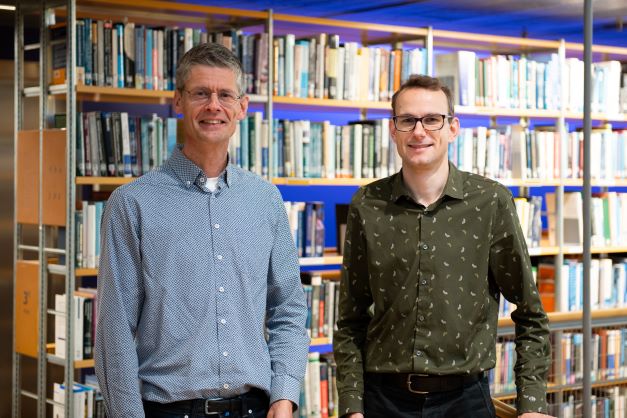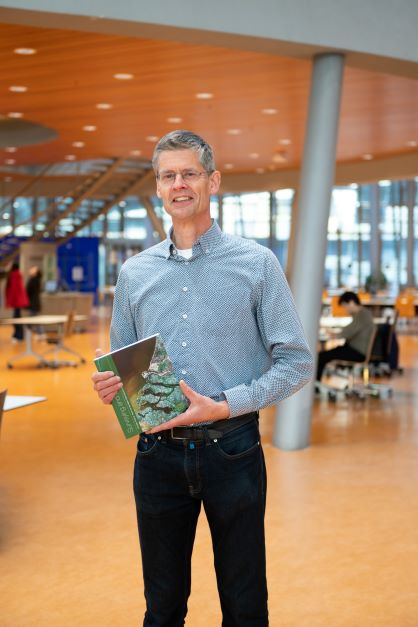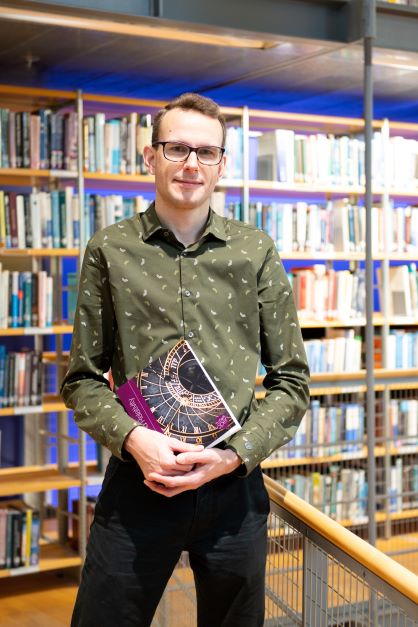Developing an open textbook: "What it has brought us, and what it could bring you"
According to associate professors Timon Idema and Christian Tiberius, publishing an open textbook is of great benefit to them. It helped in filling the gap in existing educational literature, improved their understanding of the teaching material, and provided them large freedom to shape a book according to their own needs and wishes. Can you expect quick results? Definitely not. Patience and enjoyment of the process itself are key to making an open textbook happen. Idema and Tiberius talk honestly and openly about the opportunities and challenges of open textbook publishing.
An open textbook is an educational publication released with an open license made available online to be freely used by students, teachers, and members of the public. It’s easily shared, extended and kept up-to-date by the authors, and allows others to retain, reuse, revise, remix and redistribute.
Closing the educational gap
“What drove me to publish an open textbook? Well, I couldn't find the right fit.” Timon Idema, associate professor in theoretical biophysics, wrote an open textbook on mechanics and relativity. It didn’t start out as a book, though: he was simply teaching a first year course and noticed his lecture notes became the backbone of his teachings. “Of the available textbooks, some were essentially high-school level, while others were nice if you know the material, but too big of a jump from high school physics. It was clear that there was a gap in existing educational literature, so I used my lecture notes to fill this gap.”
Christian Tiberius had a similar experience. Teaching a third year bachelor course on surveying and mapping at the faculty of Civil Engineering and Geosciences, he noticed there was no comprehensive textbook at academic level in this domain. “The choice was either to compromise and be satisfied with educational sources that were available, or to work hard yourself.” He chose the latter and with colleagues he co-created an open textbook on surveying and mapping. “It has been received very well by students as well as professionals.”
Deepening your knowledge and collaboration
Both academics look back positively on the process. “Creating an open textbook inspired me to go beyond the level of the lecture notes,” tells Idema. “I had to put everything together coherently and to make it into a well thought out whole. The process improved my understanding of the material and consequently my teaching.” Tiberius: “For me the fact that creating the open textbook was a joint effort with colleagues from the same department was a big plus. We could balance and complement each other, and review each other's work.”
Enjoying editorial freedom
Tiberius: “An important reason to choose an open textbook - as opposed to a traditional one - is the large freedom to shape the book according to your own needs and wishes. An established publishing house has a lot of constraints and requirements.” Added to this, the digital nature of open textbooks makes updating relatively easy. Idema: “For me the advantages of publishing a textbook openly far outweigh the little money you would make from a traditionally published textbook at a publishing house.”
Accessible education
Another big advantage is the low cost for the student. Tiberius: “With an open textbook you keep education accessible for all. Students can download the pdf for free or print it on demand for about 40 euros. If I would bring the same book to a publisher they would charge over a 100 euros. That’s quite expensive for most students.” Idema adds: “On Twitter I got a response from a teacher from Canada who noticed study materials were way too expensive for his students. This person I’ve never met stated he ‘found this beautiful alternative’ in my book.” Tiberius knows that the subject of surveying and mapping is also useful for the World Bank: “It’s great to know that developing countries can use the textbook as a free resource.”
Open textbooks are ideally published under the creative commons (CC BY) license. Some might feel a bit uncomfortable with the idea that others can access and use their work freely, not Idema and Tiberius. Idema: “If somebody uses part of it, they still have to make clear what part is from this book and what is their own. If they don’t, it's plagiarism. I would say it only gets better by someone adding further useful information. If someone uses it or shares it on their open textbook website, I take it as a compliment.” Tiberius: “If you’ve written a good book, the idea that others can rely on it is nice. It also shows we have something to tell the world at TU Delft.”
Balancing between research and education
The benefits aside, it definitely is quite a job. Idema started teaching his course in 2013, worked with hand-outs for several years and started to transform these lecture notes into an open textbook from 2016 onwards. In 2018 he enlisted the help of the TU Delft Library. “You can definitely say that this book was 5 years in the making.”.
Tiberius points out: “A difficulty is that in the academic world research usually comes first. We are committed to good education and educational materials, but research being the priority, the planning of a big project like this is hard.” Idema smiles when he thinks back: “The year I started working on the open textbook they told me: ‘Don’t do it, it will take too much of your time.’ However, by the time it was finished there was great appreciation for it. Over the last ten years, efforts in education in the broader sense have become more recognised.”
One of the more practical difficulties Idema encountered was finding good photos and figures. “Ones that you are allowed to use, that is,” says Idema. “NASA had some nice ones which I could use and for the mechanics part I even took a few myself. Drawing is not my forte, so I hired a Teaching Assistant to make my sketches into nice and professional visuals.”
Take your time
To colleagues who are considering creating an open textbook, they offer some advice from experience. Idema: “Start with what you’re teaching and follow your teaching rhythm. Next to what you know, you will encounter stuff you don’t know and you will thereby also expand your knowledge. It’s okay if you’re not finished at the end of the course, you can take multiple years.”
“Don’t rush,” emphasises Tiberius. Idema fully endorses that: “You should never write a book in a hurry. Allow yourself to iterate, and don’t force yourself. It becomes better if you take the time.” Tiberius: “It holds for wine and for open textbooks.”
Keep it short and visual
When it comes to the content, Tiberius’ experience is that most students at Delft don’t like extensive reading. “So don’t offer them pages full of text, text and more text. If you can bring about information in maps, a diagram or a graph, please do so. Generally it’s more work as an author, but it really pays off for the students.” He also encourages to add problems and exercises to make the book more lively. Idema: “I work with Teaching Assistants to assemble problems and make them more appealing for the students.”
Go for it!
“I would definitely do it another time. It’s hard work, but rewarding,” concludes Tiberius. “Don’t hesitate and take advantage of the support and the expertise of the Library.” Idema feels the same way: “The positive experience I have with open textbook publishing has even prompted me to publish another open text book I am currently working on.” Idema is also working on a new generation of open textbooks. He reveals: “Interactive textbooks are the next step.”
Thinking about publishing your own open textbook?
The TU Delft Library provides extensive services to support you regarding open textbook publication. These include: copyright check and advice, editorial services, guidance with writing tools and type settings, ISBN & DOI, cover design, printing on demand and worldwide dissemination. For more information, please contact educationsupport-lib@tudelft.nl.


